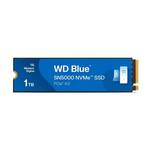For those who missed the earlier 1TB deal. The WD SN5000 1TB for $6 more. The SN5000 is basically a minor refresh of the SN580 and uses the same TLC NAND chips (but probably with a different controller). On the spec sheet for the 1TB model, there's a bump in seq read/write performance, and a drop bump in random read/write performance. But I think for most users, the real world difference is negligible between them.
Surcharges: 0% for bank deposit, Afterpay & Zip Money. 1.2% for VISA / MasterCard & PayPal. 2.2% for AmEx.
| Controller | WD In-House: 4 Channel, DRAMless |
| NAND Flash | WD / Kioxia BiCS 5 112L 3D TLC NAND |
| DRAM Cache | None, HMB Supported |
| Sequential Read | 5,150 MB/s |
| Sequential Write | 4,900 MB/s |
| Random Read | 730,000 IOPS |
| Random Write | 770,000 IOPS |
| Write Endurance | 600 TBW |
| Warranty | 5 Years |
Don't use the review of the SN5000 4TB model, because that capacity uses completely different memory chips (QLC NAND).
Thanks to Meteor Anarcom for telling me post this as a deal.
Update 21/07/2025: Deal is active again.


Would this be suitable for a boot drive in a new build? My current boot drive is a 500gb 970 evo plus, should i just move that over?